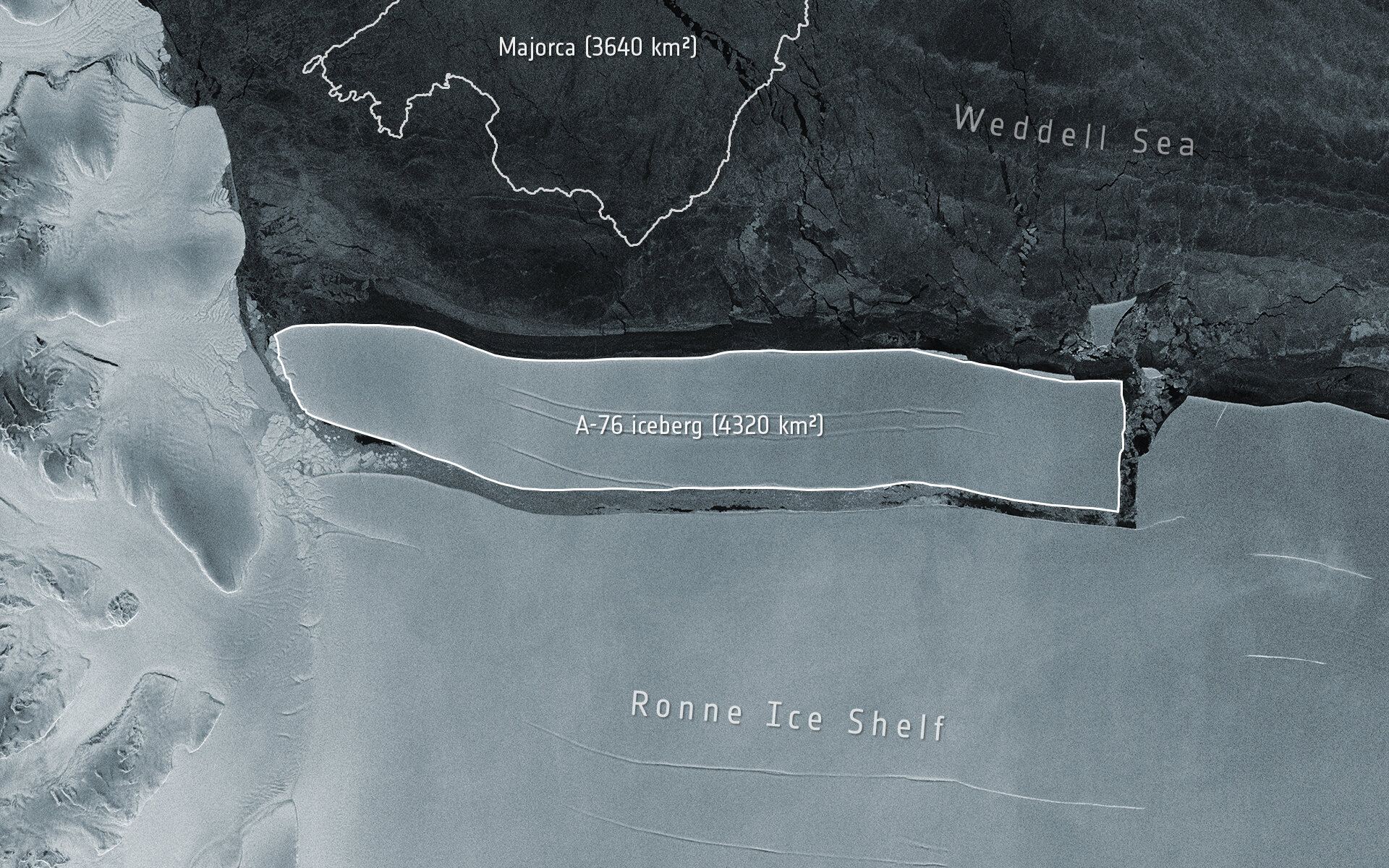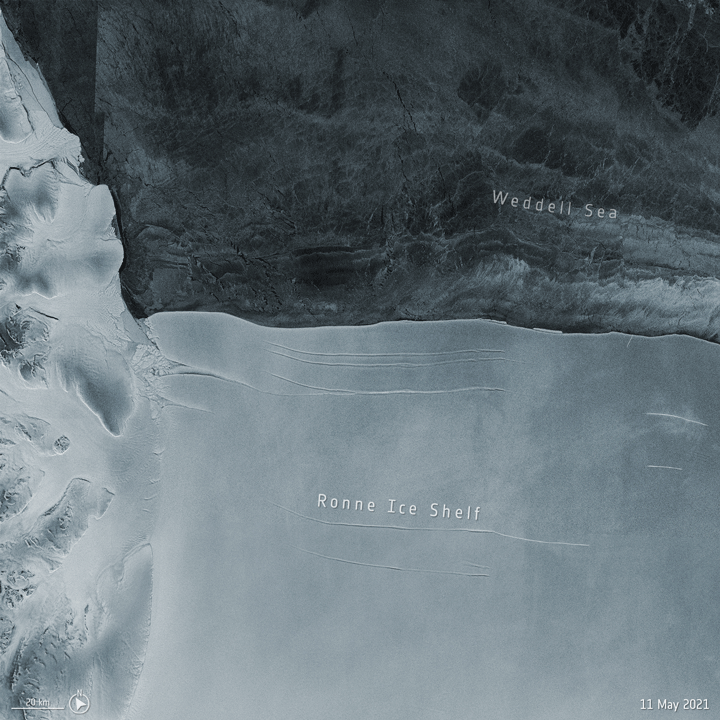
Antarctica is surrounded by icebergs. However, the finger-shaped chunk of ice that recently broke loose from the western side of the Ronne Ice Shelf — one of the world's most extensive ice platforms — is worthy of a mention. Measuring approximately 105 miles (170 km) long and 15 miles (25 km) wide, it boasts a surface area of 1,660 sq miles (4,300 sq km) and is currently the world's largest iceberg.
The massive chunk of ice floating in the Weddell Sea was first spotted on May 13, 2021, by Dr. Keith Makinson at the British Antarctic Survey and later confirmed by images captured by the European Space Agency's (ESA's) Sentinel-1A satellite. Since the iceberg is located in Antarctica's quadrant A — the Bellingshausen/Weddell Sea region — and is the 76th one named by the US National Ice Center scientists, it was called A-76.

Researchers say that periodic calving of icebergs like A-76 is a part of an ice shelf's normal life span and most likely not related to climate change. They speculate that the massive chunk will drift through the South Atlantic for several years before breaking into smaller pieces and melting. Since the iceberg has already displaced the water it will add to the ocean as it melts, it will not contribute to rising sea levels.
Though A-76 is undoubtedly larger than the existing record-holder — a 1,540-sq-mile (4,000-sq-km) iceberg dubbed A-23A that is still floating in the Weddell Sea, it is not the biggest iceberg in recorded history. That honor goes to B-15, which measured 4,200 sq miles (11,000 sq km) — about the size of the island of Jamaica — when it broke off Antarctica's Ross Ice Shelf in 2000.
Resources: ESA.int, Livescience.com, Guinnessworldrecords.com
